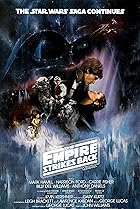Bashir and Kira are returning to the station via runabout when they encounter a ship in distress. They rescue the lone survivor, an alien security officer, but are unable to save her prisoner, a man named Vantika whom she claims is extremely dangerous. Upon returning to the station, someone begins tampering with station security and appears to be plotting to steal an inbound shipment of rare material, and all evidence points to Vantika being the one responsible for the issues. But how can that be if he is dead?
This is another inconsequential episode, although the wormhole does at least play a small part, as the shipment of deuridium is coming from the Gamma Quadrant. The tension and pacing are both decent. Unlike the previous episode, the performances of the actors are all very good (with one very obvious and notable exception). Sisko, Quark, Odo, and Jadzia all gets chances to shine and their performances are what make this a slightly above-average ep.
THE GOOD
- "If you want my opinion—" "Actually I don't." Man I love Sisko's no-BS attitude. His handling of Odo's wounded pride is also very impressive. You gain a lot of admiration for Sisko's ability to command in this episode. He is fair but doesn't tolerate any nonsense.
- As mentioned above, several characters have multiple noteworthy moments. Rene Auberjonois steals the show though. Every scene with him is great, from his conflicts with Lt. Primmin, to his banter with Quark, to his no-holds-barred conversation with Sisko. And even though Odo is too hard on Primmin at first, he knows when he was wrong and gives him due credit at the end, showing he is a fair, if harsh, judge of character.
THE BAD
- Oh my Prime Directive is Alexander Siddig bad here. So, so bad. Especially the scenes where he plays Vantika. I never realized what an awful actor he was in the first season until this time rewatching the show. Fortunately, he does improve as the show proceeds and has actually had a very successful acting career post-Star Trek. But boy is he bad here.
- Maybe it's because I've seen the episode several times before, but it seemed painfully obvious to me that Bashir was the bad guy all along. There was no mystery that I could discern. However, in spite of knowing I still felt the tension from seeing Bashir/Vantika skulk around the station and mess everything up, so that's a positive at least.
- Going off the above "bad," it's baffling to me that nobody suspected Bashir, especially Jadzia after discovering how Vantika had survived, or Kira after seeing Vantika grab Bashir right before dying. Definitely makes the crew look incompetent.
- No O'Brien for the second episode in a row.
THE UGLY
- PLOT HOLE: Now that Vantika has a new (human) body, he no longer has any need for the deuridium since he originally wanted it to prolong his life. None of his actions after the first scene make any sense in that light. He hangs around the station and waits to get caught for...absolutely no reason.
- Runabout used: Rio Grande multiple times
- The material that Vantika is trying to steal, deuridium, is apparently fictional.
- The freighter carrying the deuridium has Federation LCARS control interfaces, in spite of not being crewed by Starfleet personnel. That would explain how Bashir knew exactly what button to push to lower the shields, even in his disoriented state.
- Glial cells are what Vantika uses to transfer his consciousness into Bashir, but it's unclear how that would work since glial cells are non-neuronal, but are rather part of the central nervous system that surrounds and cares for the neural tissue.






